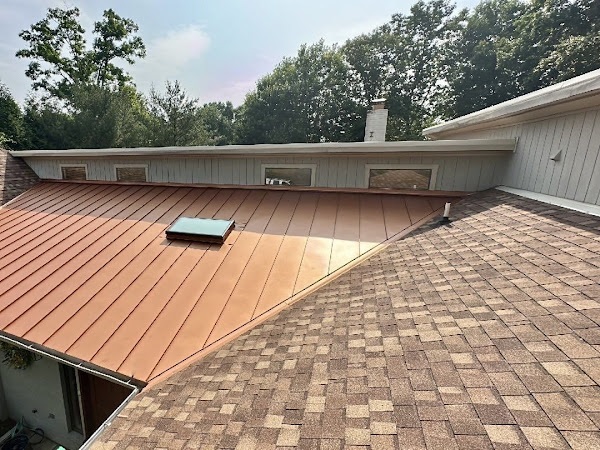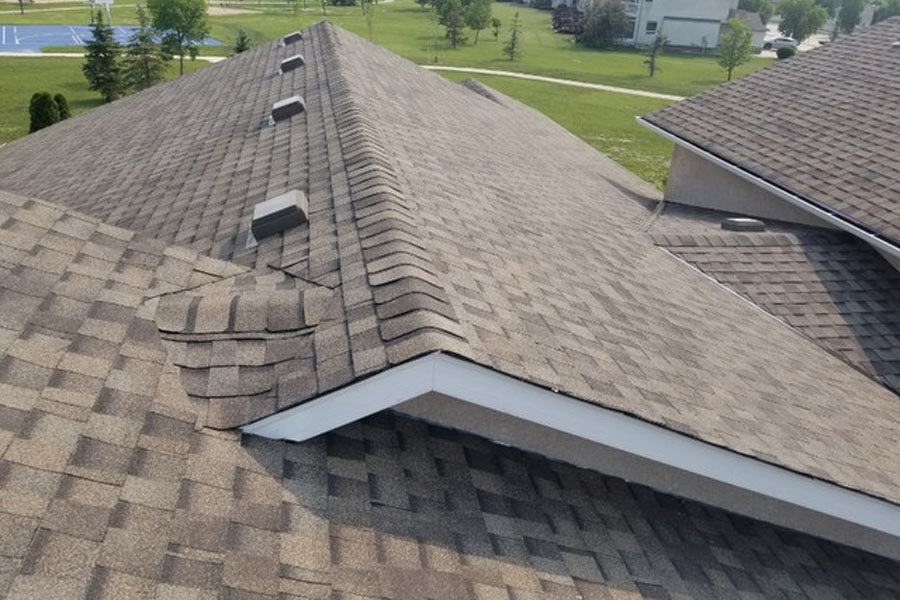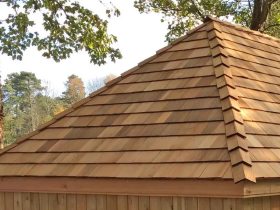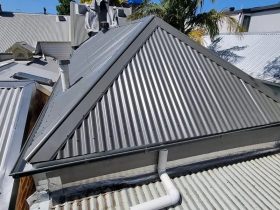As environmental awareness continues to grow, more homeowners are seeking eco-friendly roofing options that not only protect their homes but also contribute to a sustainable future. Choosing the right roofing material can significantly impact your home’s energy efficiency, durability, and overall environmental footprint. Here’s a comprehensive guide to the best eco-friendly roofing options available today.
- Cool Roofs
Cool roofs are designed to reflect more sunlight and absorb less heat than traditional roofs. This helps to keep your home cooler, reducing the need for air conditioning and lowering energy bills.

Advantages of Cool Roofs
- Energy Efficiency: By reflecting sunlight, cool roofs can reduce cooling energy use by 10-15%.
- Durability: These roofs often last longer because they are less affected by heat.
- Environmental Impact: Lower energy consumption means reduced greenhouse gas emissions.
Disadvantages of Cool Roofs
- Initial Cost: The installation cost can be higher than traditional roofing materials.
- Climate-Specific: Best suited for hot, sunny climates; less effective in cooler regions.
- Metal Roofing
Metal roofing is a popular eco-friendly option due to its durability and recyclability. Made from materials like aluminum, copper, and steel, metal roofs can last up to 50 years or more.
Advantages of Metal Roofing
- Longevity: Metal roofs have a long lifespan, reducing the need for frequent replacements.
- Recyclability: Metal roofs can be made from recycled materials and are fully recyclable at the end of their life.
- Energy Efficiency: Reflective coatings can reduce cooling costs by reflecting solar heat.
Disadvantages of Metal Roofing
- Noise: Metal roofs can be noisy during rain or hailstorms.
- Cost: Higher upfront cost compared to some other roofing materials.
- Green Roofs
Green roofs, also known as living roofs, are covered with vegetation and soil. They offer numerous environmental benefits, including improved air quality and stormwater management.
Advantages of Green Roofs
- Insulation: Green roofs provide natural insulation, reducing heating and cooling costs.
- Biodiversity: They create habitats for wildlife, promoting biodiversity.
- Stormwater Management: Green roofs absorb rainwater, reducing runoff and the risk of flooding.
Disadvantages of Green Roofs
- Weight: The added weight of soil and plants requires additional structural support.
- Maintenance: Regular maintenance is needed to keep the vegetation healthy.
- Solar Roofing
Solar roofing integrates solar panels or solar shingles into the roof structure, allowing homeowners to generate renewable energy.
Advantages of Solar Roofing
- Energy Production: Solar roofs generate electricity, reducing reliance on fossil fuels.
- Cost Savings: Over time, solar roofs can significantly lower energy bills.
- Tax Incentives: Many regions offer tax credits and incentives for installing solar roofs.
Disadvantages of Solar Roofing
- Initial Cost: High upfront cost for installation.
- Sunlight Dependency: Effectiveness depends on the amount of sunlight the roof receives.
- Recycled Shingles
Recycled shingles are made from materials like plastic, rubber, and wood fiber, providing a sustainable alternative to traditional asphalt shingles.
Advantages of Recycled Shingles
- Environmental Impact: Using recycled materials reduces waste and conserves natural resources.
- Durability: Recycled shingles can last up to 50 years.
- Aesthetic Appeal: Available in various styles and colors, they can mimic the look of more expensive materials like slate or wood.
Disadvantages of Recycled Shingles
- Cost: While generally affordable, some high-end recycled shingles can be costly.
- Availability: May not be as widely available as traditional roofing materials.
Conclusion
Choosing an eco-friendly roofing option is a smart investment for both your home and the environment. Whether you opt for cool roofs, metal roofing, green roofs, solar roofing, or recycled shingles, each option offers unique benefits that contribute to sustainability and energy efficiency. By considering factors like climate, budget, and long-term goals, you can select the best roofing material to meet your needs and support a greener future.





